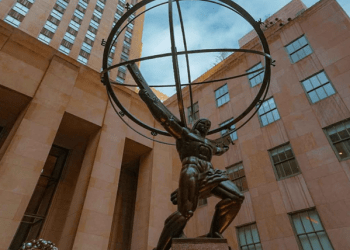This article will explain the process banks use to verify your identity. The author will explore the reasons, how it’s done, and what the benefits are of using identity verification in your bank.
What is Identity Verification
When you sign up for a new bank account, the bank is required by law to verify your identity. There are a few different ways that banks can verify your identity, but the most common method is to ask for your Social Security number. The bank will use this number to run a background check and make sure that you are who you say you are.
Other forms of identification that banks may ask for include your driver’s licence, passport, or birth certificate. If you do not have any of these forms of identification, the bank may still be able to verify your identity through other means, such as by asking for your social security card or tax returns.
Once your identity has been verified, the bank will be able to open up a new account in your name and begin processing any transactions that you make. This process is important for both you and the bank, as it helps to ensure that your money is safe and secure.
How Banks Verify Your Identity
Banks use a variety of methods to verify your identity when you open an account or conduct certain transactions. Here are some of the most common ways banks verify your identity:
- Social Security Number: Your SSN is one of the main ways banks verify your identity. When you provide your SSN to a bank, they will run a credit check to confirm your identity and make sure you’re not using a false or stolen number.
- Photo ID: Another way banks verify your identity is by requiring a photo ID, such as a driver’s licence or passport. This helps them confirm that you are who you say you are and that the information on your ID matches what they have on file for you.
- Address Verification: Banks also verify your identity by confirming your current address. This can be done through a utility bill, credit card statement, or other official mail sent to your address. By verifying your address, banks can help ensure that you’re not using a false or stolen identity.
- Fingerprints: In some cases, banks may require fingerprints as part of their verification process. This is usually only done for high-risk transactions, such as opening a new account or applying for a loan. Fingerprints can help confirm your identity and prevent fraudsters from using your personal information to open accounts in your name.
Why do they need to know who I am?
In order to prevent fraud and protect your identity, banks need to verify who you are. They will usually do this by asking for your name, date of birth, address, and Social Security number. They may also ask for your driver’s licence number or other identification.
Banks use this information to verify your identity and make sure that you are who you say you are. This helps them to prevent fraud and protect your identity.
How Do You Verify Your Identity
When you go to a bank to set up an account, the teller will ask for your driver’s licence or other form of identification. They need to verify your identity to make sure you are who you say you are.
The teller will take down your information from your ID and input it into the system. The bank will then run a credit check to see if there is any information that matches up with what they have on file for you. If everything checks out, then you will be able to open an account.
If you are trying to open an account online, the process is similar. You will be asked to input your personal information and the bank will run a credit check. Once everything checks out, you will be able to access your account.
Conclusion
Banks use a variety of methods to verify your identity and make sure you’re the real you. These methods can include asking for personal information, like your Social Security number or date of birth, as well as requiring documentation, like a driver’s licence or passport. By verifying your identity, banks can help prevent fraud and keep your account safe.












